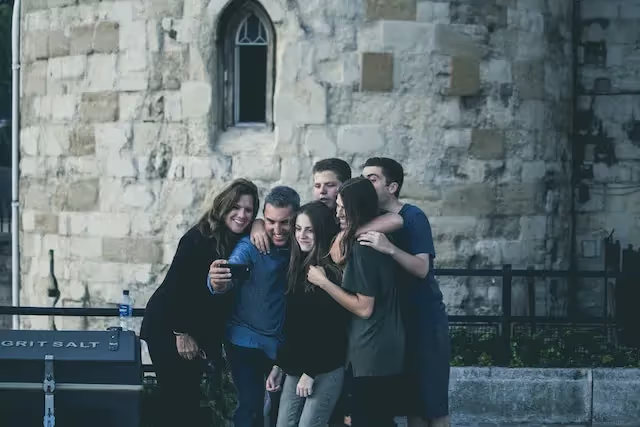What is Discrete Trial Training in ABA? (DTT)
Discrete trial training is one of the many types of training that is based on applied behavior analysis (ABA).

What is discrete trial training (DTT)?
Discrete trial training is one of the many types of training that is based on applied behavior analysis (ABA). It is designed to help people with behavioral disorders, like autism, to learn how they can respond appropriately to various social situations that are difficult for them to read.
.avif)
It can be used to help not only enhance their communication skills and improve their relationships but it has been known to help boost their overall quality of life when administered properly. The discrete trial training process always consists of five steps:
- Antecedent
- Prompt
- Response
- Consequence for the response
- Interval between trials
When using DTT, the process could vary slightly depending on the skill that the DTT is working with. If it is a simple skill it might only take one step, but when the skill has to be broken down into smaller sections, DTT becomes a form of chaining program, which means they take one step at a time and move forward based on the child's progress.
Examples of discrete trial training
When looking for examples of discrete trial training, you have to understand that DTT can be used for a single activity, like taking a bath, or a full day's routine.
As a parent or caregiver of an autistic child, it is important to remember that it can be a challenge to reinforce every victory, regardless of how big or small, but it is still one of the most important things you can do to achieve a final positive outcome.
Now, let's go over what an example of discrete trial training might look like on paper. The skill we will use is picking up two objects.
The Antecedent phase is when the adult says to the child, "Give me two balls." The behavior phase is when the learner gives the two balls to the adult. Finally, the criterion is the percentage goal for the child to reach when given the command.
If you were to read the ABA therapist's objective notes. It might read like this:
When I ask Adam to "give two" balls (antecedent phase), Adam will pick up two balls and hand them to me (behavior phrase) 70% of the time over four consecutive days (criterion).
Whenever the child does the behavior correctly, the therapist or adult will provide some form of reward. This reward could sometimes be like a piece of the child's favorite candy.
However, if they do not do the behavior correctly, they would then repeat the objective statement with gentle prodding to still provide the child with confidence that they can do it. They will repeat this process until the overall objective goal has been met.
Who is discrete trial training for?
Discrete trial training was designed with small children of two to six years of age in mind who are classified as autistic.
However, this training method has been used with people of various other ages, and it has still proven to be an effective training process.
The more ABA therapists use discrete trial training the more data is collected which ultimately allows them to change the training slightly to make it work better than before. Just like with every training program, it will evolve with more data that is collected and submitted using DTT.
What is discrete trial training used for?
DTT paired with ABA therapy is meant to help autistic children gain a level of independence in their day-to-day lives. The skills that DTT can help with range from complex behavioral skills to very simple tasks.
It all depends on the needs of the child. Here are some of the different types of skills that DTT can be used to teach and improve:
- Writing skills
- Everyday speech and language skills needed for conversations
- Skills needed to understand and use sign language or various communication devices
- Following instructions, daily living skills like dressing, or using utensils at meals
However, DTT is not just to help children with skills that they already know. It can also be used to help them learn new behaviors.
Although DTT and ABA therapy are designed to help autistic children develop independence, parents and ABA therapists should not use this approach with the expectations of making the child make or fit in with social norms.
Where does discrete trial training come from?
Discrete trial training is one of the most common types of therapy that ABA therapists use to help work and treat children who fall on the autism spectrum.
This form of training was not developed until the 1980s when Dr. Ivar Lovaas was looking for a new technique to work with children with autism. Since then, it has been used in many ABA therapists' routines.
He was working at the University of California in Los Angeles (UCLA) when he developed DTT.
Over the years, some of the protocols have changed slightly with the development and understanding of other ABA techniques, but the fundamentals of DTT that Dr. Lovaas developed are still a huge part of the training today.
Does discrete trial training help children?
According to some research data, discrete trial training has been shown to provide many positive effects on children who has autism. Many of these studies, it has also shown that DTT works better when it has been paired with other types of ABA techniques.
Some of the data surrounding DTT and ABA therapy are controversial. Some professionals feel that ABA programs can be too intense for children because they have to be performed one-to-one with a therapist each day and week. However, these programs have still shown to be productive and effective.
It is important to make sure that before starting with discrete trial training or any other type of ABA therapy with your child you speak thoroughly with the ABA therapist to ensure you understand the protocols and what the program will intel.
References
Recent News
Related articles

Working With Autistic Children: 10 Career Options
Want to work with autistic children? Here are 10 career options for you to consider.

What Is The Age Limit For ABA Therapy In Indiana?
Find out what the age limit is for receiving Applied Behavior Analysis (ABA) therapy in Indiana.

What Is The Age Limit For ABA Therapy In Arizona?
Find out what the age limit is for receiving Applied Behavior Analysis (ABA) therapy in Arizona.

Verbal Operants In ABA: Definition & Examples
In Applied Behavior Analysis, verbal operants are a type of verbal behavior.

Token Economy: Examples & Applications in ABA
A token economy is a procedure that was developed to help reduce maladaptive behaviors and increased desire behaviors by providing a tangible conditioned reinforcer.

Trigger Analysis In ABA: Definition & Examples
Trigger analysis is a segment of ABA therapy where children are taught by therapists to pinpoint the behaviors and emotions that happen before, during, and after an event that takes place.

Variable Ratio Schedule & Examples
A variable-ratio schedule is a random reinforcement where responses are reinforced following varied responses afterward.

Task Analysis In ABA Therapy: Examples & Strategies
Task analysis is a process of teaching that divides complicated activities into sections involving easier steps for students to more easily take.

Stimulus Equivalence In ABA: Definition & Examples
Stimulus equivalence shows how relationships can manifest among different types of stimuli in different situations.

Speech Therapy For Autism: ABA vs. Speech Therapy
ABA therapy can help individuals with speech impairments learn to better identify and utilize the language skills they already have.

Stimulus Control Transfer ABA: Definition & Examples
Stimulus control is defined as an expression used to detail circumstances where a behavior is triggered by the existence or absence of a stimulus.

Social Validity In ABA: Definition & Examples
Social validity is the acceptance of interventions concerning behavioral changes.

